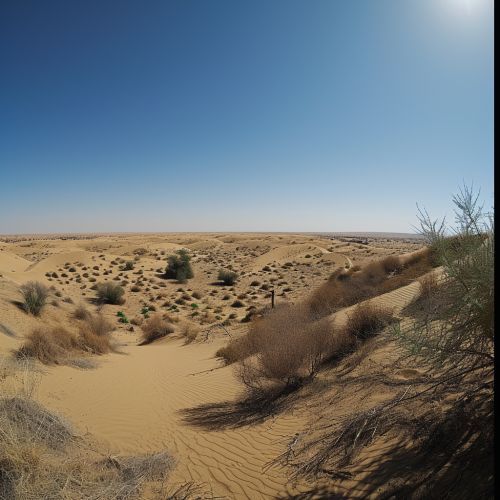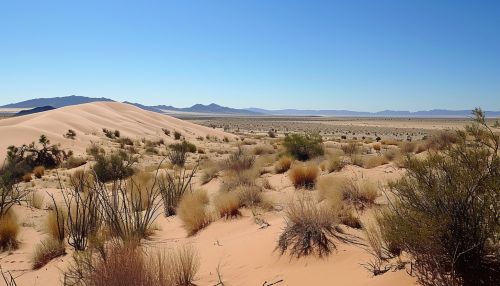Desert Conservation Efforts
Introduction
Desert conservation is a branch of conservation biology that focuses on the preservation and sustainable management of desert ecosystems. These ecosystems, characterized by low rainfall, extreme temperatures, and unique biodiversity, are under threat from various human activities and climate change. This article explores the various strategies and efforts aimed at conserving these fragile ecosystems.
Desert Ecosystems
Deserts are arid regions receiving less than 250 mm of rain per year. Despite their harsh conditions, deserts are home to a diverse range of flora and fauna, many of which have evolved unique adaptations to survive in these extreme environments. Deserts can be classified into four types: hot and dry, semiarid, coastal, and cold deserts.


Threats to Desert Ecosystems
Desert ecosystems face numerous threats, primarily from human activities and climate change. These include:
- Overgrazing: Overgrazing by livestock can lead to desertification, a process where fertile land becomes desert.
- Mining: Mining activities can lead to habitat destruction and pollution.
- Urbanization: Expansion of urban areas can lead to habitat loss and fragmentation.
- Climate Change: Changes in temperature and precipitation patterns can disrupt desert ecosystems and threaten the survival of desert species.
Desert Conservation Strategies
Various strategies have been implemented to conserve desert ecosystems and their biodiversity. These include:
- Protected Areas: Establishing protected areas such as national parks and wildlife reserves to safeguard critical habitats.
- Sustainable Land Management: Implementing sustainable land management practices to prevent overgrazing and desertification.
- Restoration: Restoring degraded desert ecosystems through reforestation and other techniques.
- Species Conservation: Implementing species-specific conservation strategies to protect endangered desert species.
Case Studies in Desert Conservation
Several successful desert conservation efforts have been implemented worldwide. These include:
- The Sonoran Desert Conservation Plan: This plan was implemented in the Sonoran Desert in Arizona, USA, to protect the desert's unique biodiversity and cultural heritage.
- The Namib Desert Environmental Education Trust (NaDEET): NaDEET is a non-profit organization in Namibia that promotes sustainable living and environmental education in the Namib Desert.
- The Sahara Conservation Fund: This fund works to conserve the wildlife of the Sahara and Sahel through science, conservation, and advocacy.
Conclusion
Desert conservation is crucial for preserving the unique biodiversity of desert ecosystems and ensuring their sustainable use. While challenges remain, ongoing conservation efforts offer hope for the future of these fragile ecosystems.
